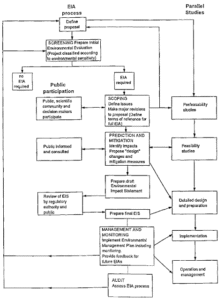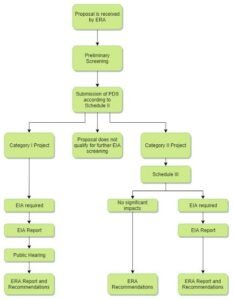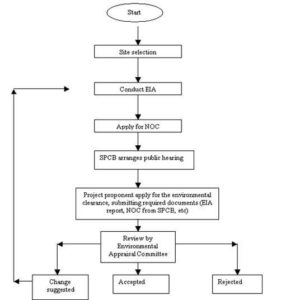Back to: Environmental Biology 500 Level
Welcome to class!
Hello my ever-dedicated learner! It’s always a joy to connect with you. You’ve been doing such an excellent job understanding the Environmental Impact Assessment (EIA) process, and today, we’re going to look at something very practical—the EIA Report Structure and Review. Just like every good assignment or research project needs a proper format, an EIA report must follow a clear structure so that everyone—from scientists to government officials and even community members—can understand what the project is about and how it will affect the environment.
Let’s unpack this together in a way that’s as simple and Nigerian as possible!
EIA Report Structure And Review
What is an EIA Report?

An EIA report is a formal document that presents all the findings from the EIA process. It contains the project description, environmental information, predicted impacts, proposed solutions, and how people were involved. This report helps decision-makers decide whether the project should be approved, modified, or rejected.
Think of it like a complete school project or thesis—it tells the full story from start to finish.
Standard Structure of an EIA Report in Nigeria
Executive Summary
Gives a brief summary of the entire report.
Highlights key findings, major impacts, and recommendations.
It’s like the “gist” of the full report for busy officials.

Introduction
Explains what the project is, who is developing it, and why the EIA was done.
Project Description
Details the location, nature, size, and purpose of the project.
Includes maps and diagrams, if needed.
Legal and Policy Framework
Lists Nigerian environmental laws, international agreements, and standards the project must follow.
Baseline Environmental Conditions
Describes the current state of the environment—air, water, soil, biodiversity, and communities in the area.
Impact Assessment and Mitigation Measures
Predicts what changes or problems the project may cause.
Proposes solutions to avoid, reduce, or fix these impacts.
Public Participation
Summarises how community members and stakeholders were involved, including public meetings, feedback, and concerns raised.
Environmental Management Plan (EMP)
Outlines how environmental protection will be managed during and after the project.
Includes monitoring, reporting, and who will be responsible.
Conclusion and Recommendations
Final thoughts on whether the project should go ahead, and under what conditions.
Appendices
Contains raw data, maps, photographs, survey results, and other supporting documents.
What is EIA Review?
EIA review is the process of checking the report to ensure it is complete, accurate, and useful. The Federal Ministry of Environment, with input from experts and sometimes the public, reviews the report to make sure nothing important is left out.
Why Review is Important:
To confirm that the project won’t harm the environment or public health.

To ensure all voices were heard and concerns addressed.
To provide a strong basis for approving or rejecting the project.
Example:
Imagine an EIA report for a gold mining project in Zamfara. If the review finds that the report ignores the risk of lead poisoning (which has been a real issue in that area), it may be rejected or sent back for revision.
Summary
- An EIA report is a detailed document showing how a project may affect the environment.
- It follows a structured format including executive summary, project description, baseline data, impact prediction, public participation, and an environmental management plan.
- Review is done to ensure the report is thorough, truthful, and useful for decision-making.
Evaluation
- What is the purpose of an EIA report?
- Mention five key sections found in a standard EIA report.
- Why is the review of an EIA report important?
- Who is responsible for reviewing EIA reports in Nigeria?
You’re doing so well, and I hope you’re proud of your progress! Remember, understanding how to structure and review an EIA report puts real power in your hands. You can help shape the future of development in Nigeria—one thoughtful decision at a time. Keep pushing forward. Afrilearn believes in you. See you in the next class, star!
